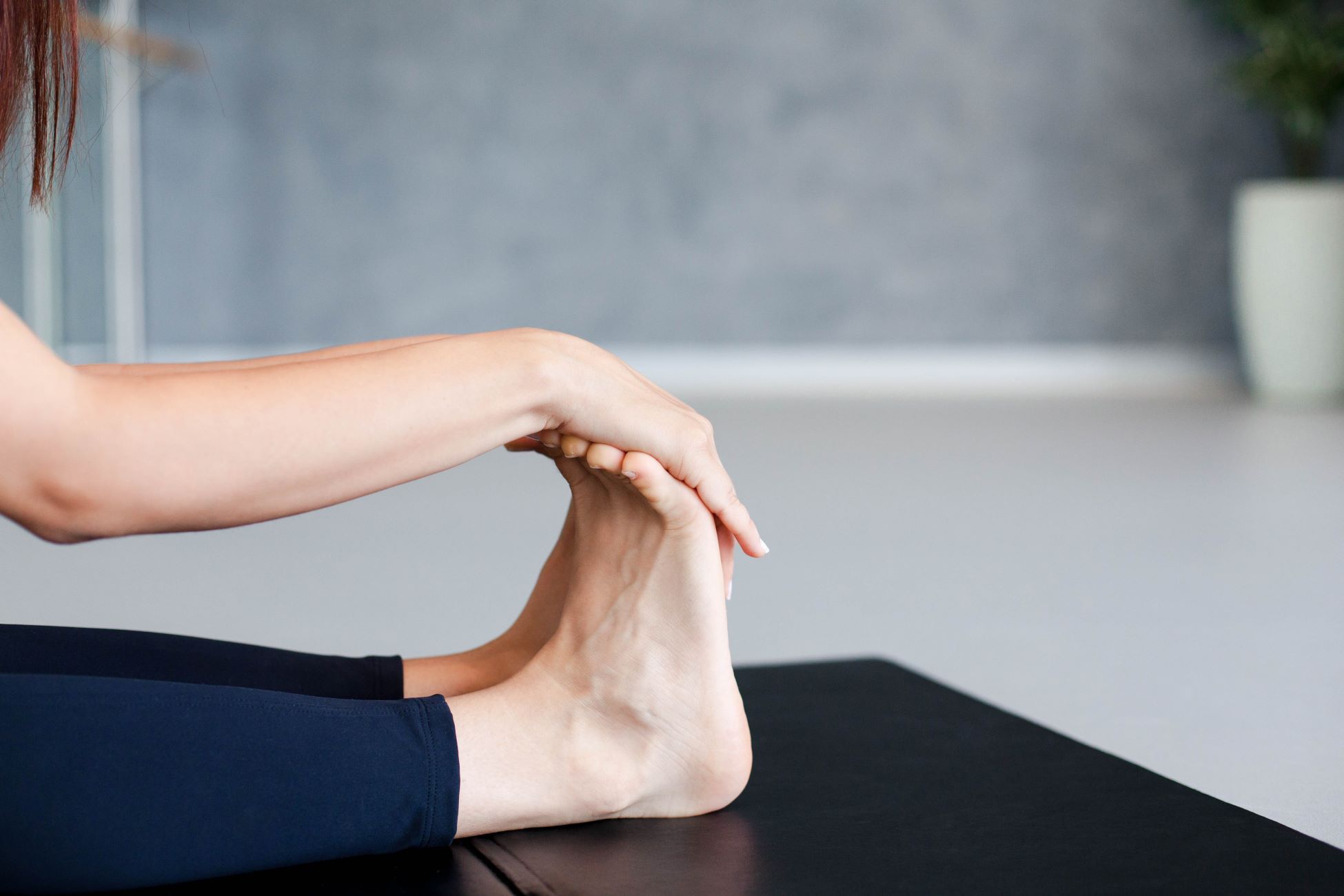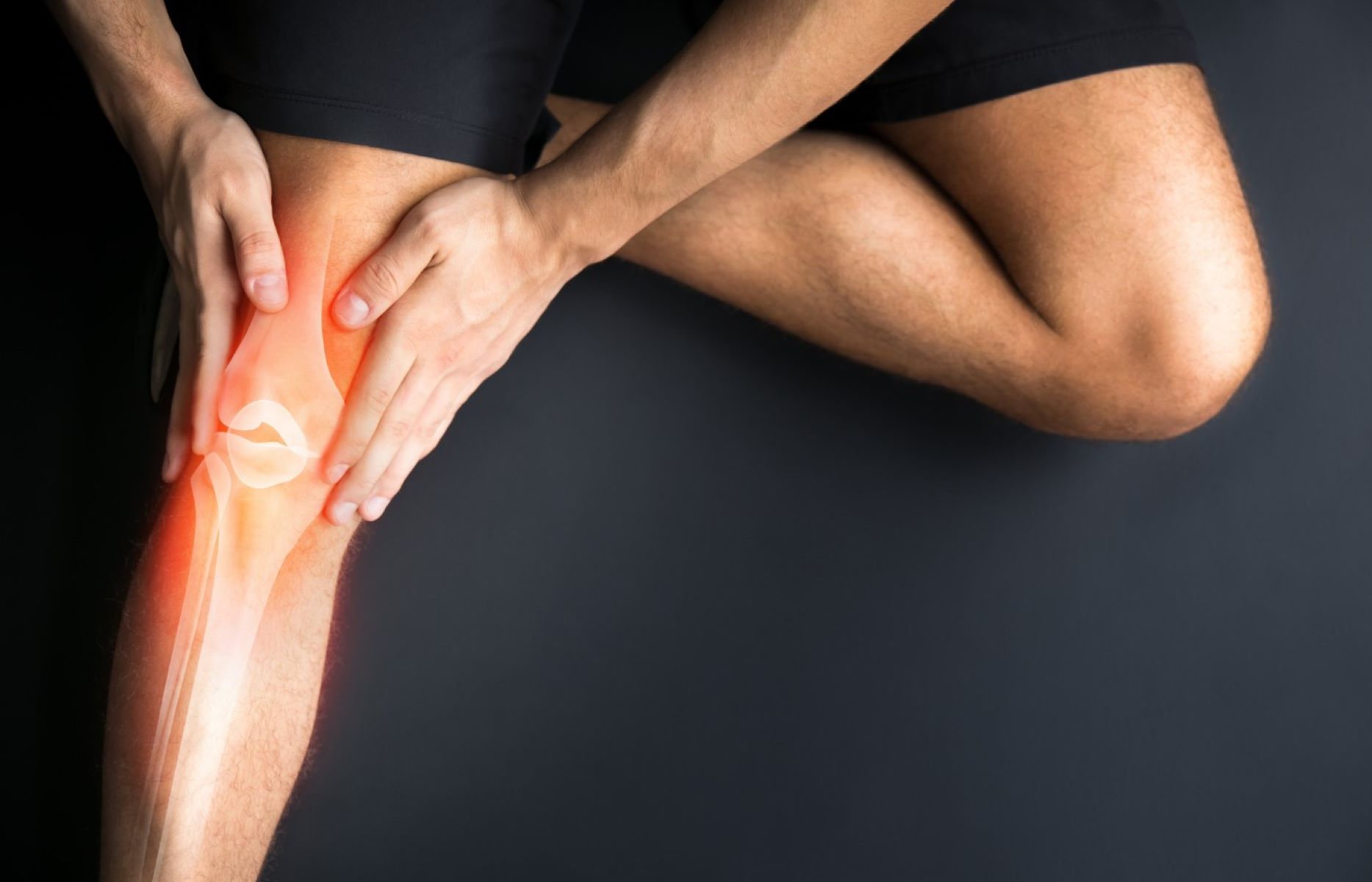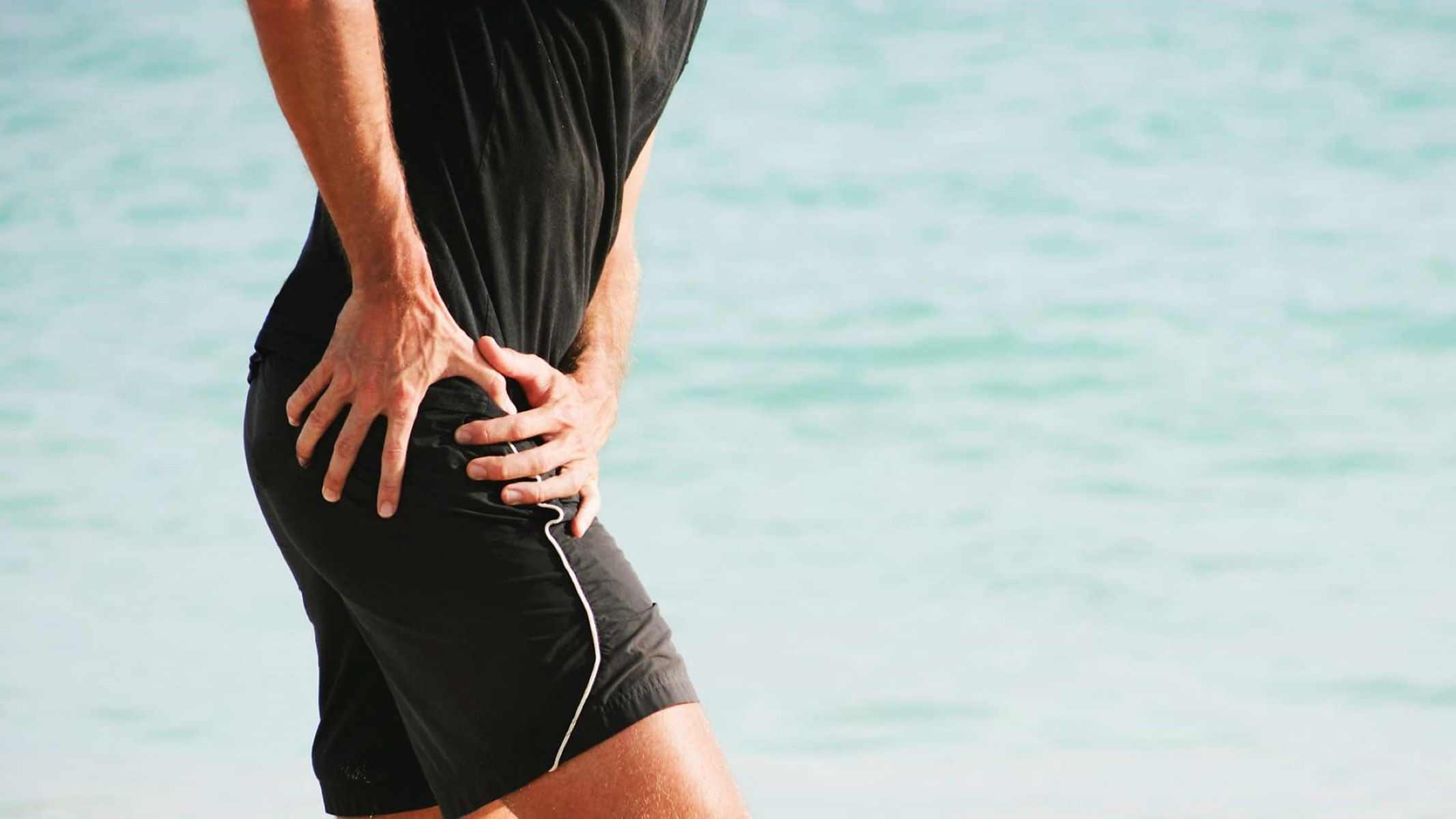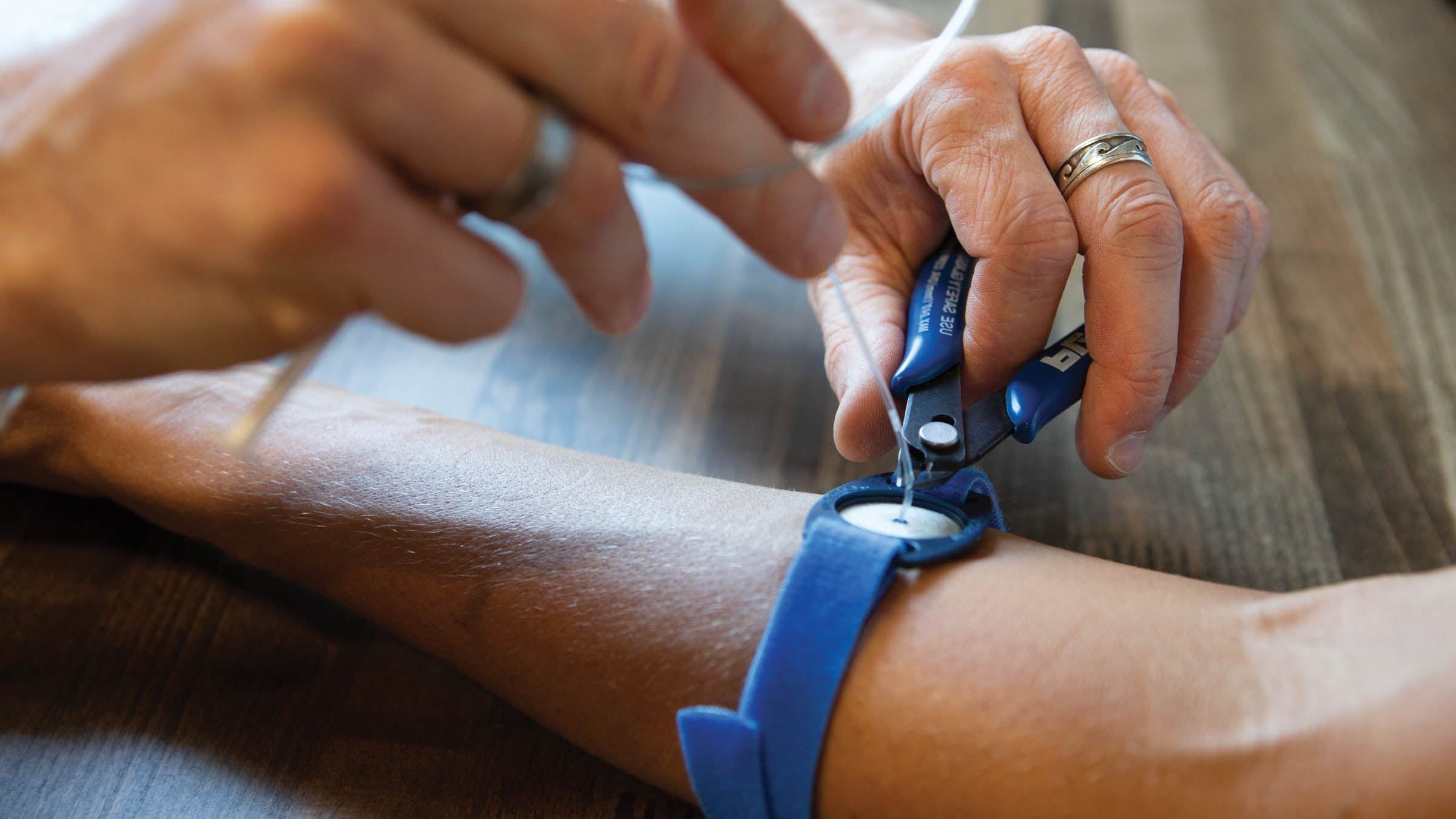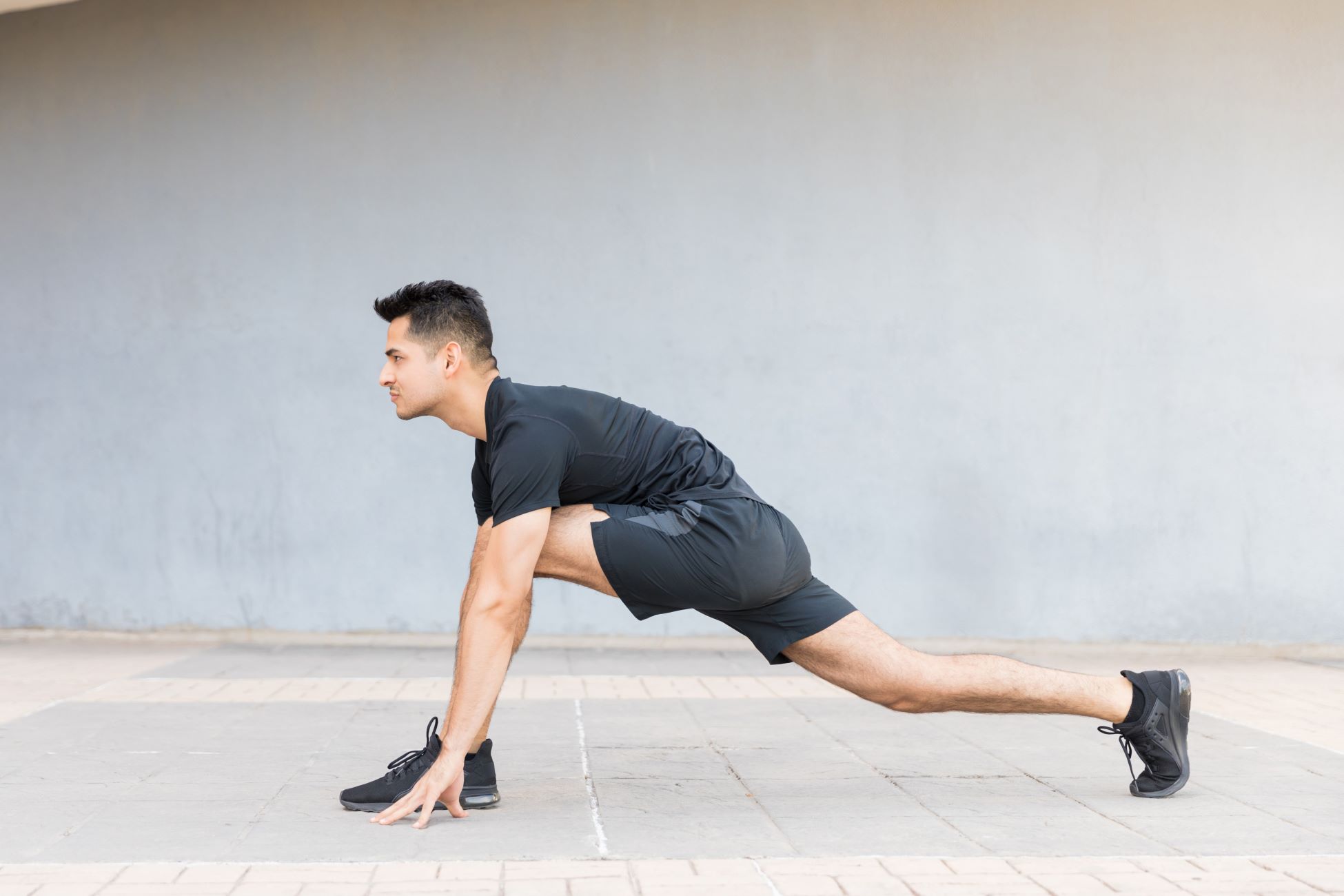Home>Health & Nutrition>Injury Prevention>Understanding Overpronation: Is Correction Necessary?


Injury Prevention
Understanding Overpronation: Is Correction Necessary?
Published: February 24, 2024
Learn about overpronation and whether correction is necessary for injury prevention. Understand the impact of overpronation on your body and how to address it effectively.
(Many of the links in this article redirect to a specific reviewed product. Your purchase of these products through affiliate links helps to generate commission for Therunningadvisor.com, at no extra cost. Learn more)
Table of Contents
The Mechanics of Overpronation
Overpronation is a common biomechanical issue that affects the way the foot rolls inward upon landing. This natural movement is essential for shock absorption and weight distribution during walking and running. However, when the foot excessively rolls inward, it can lead to various complications, particularly in the lower extremities.
The mechanics of overpronation involve the excessive inward rolling of the foot, particularly the arch, during the gait cycle. This can be attributed to several factors, including the structure of the foot, muscle imbalances, and improper footwear. When the foot overpronates, it causes the ankle to excessively rotate inward, leading to an uneven distribution of weight and increased stress on the foot and lower leg.
One of the key contributors to overpronation is the foot's arch structure. Individuals with low arches or flat feet are more prone to overpronation due to the lack of sufficient support for the foot's natural shock-absorbing mechanism. As a result, the foot tends to excessively roll inward, leading to misalignment and increased strain on the muscles and ligaments.
Muscle imbalances can also play a significant role in the mechanics of overpronation. Weakness or tightness in certain muscles, such as the calf muscles or the muscles of the foot, can disrupt the natural alignment of the foot and contribute to overpronation. Additionally, improper footwear, such as shoes with inadequate arch support or excessive flexibility, can exacerbate overpronation by failing to provide the necessary stability and control for the foot's movement.
Understanding the mechanics of overpronation is crucial for identifying the underlying causes and implementing appropriate interventions. By recognizing the factors that contribute to overpronation, individuals can take proactive measures to address the issue and mitigate the associated risks of injury.
In the subsequent sections, we will delve into the common injuries associated with overpronation, methods for assessing overpronation, and the ongoing debate surrounding the correction of overpronation. This comprehensive exploration aims to provide a holistic understanding of overpronation and equip readers with valuable insights into this prevalent biomechanical concern.
Common Injuries Associated with Overpronation
Overpronation can significantly impact the lower extremities, leading to a range of common injuries that affect individuals who experience this biomechanical issue. Understanding these potential injuries is crucial for recognizing the implications of overpronation and implementing appropriate preventive measures and interventions.
-
Plantar Fasciitis: One of the most prevalent injuries associated with overpronation is plantar fasciitis. This condition involves inflammation of the plantar fascia, a thick band of tissue that runs along the bottom of the foot. Overpronation can exacerbate this inflammation by placing excessive strain on the plantar fascia, leading to heel pain and discomfort, particularly during weight-bearing activities.
-
Achilles Tendonitis: Overpronation can also contribute to the development of Achilles tendonitis, a condition characterized by inflammation of the Achilles tendon. The excessive inward rolling of the foot can lead to increased tension and stress on the Achilles tendon, potentially resulting in pain, stiffness, and reduced mobility in the lower leg and heel area.
-
Shin Splints: Individuals with overpronation are at a higher risk of developing shin splints, a common overuse injury that affects the shin area. The repetitive stress caused by overpronation can lead to inflammation of the muscles, tendons, and bone tissue in the shin, resulting in discomfort and tenderness along the inner edge of the shin bone.
-
Knee Pain: Overpronation can also contribute to knee pain and discomfort due to the altered alignment and distribution of forces within the lower extremities. The excessive inward rolling of the foot can lead to increased stress on the knee joint, potentially resulting in conditions such as patellofemoral pain syndrome and iliotibial band syndrome.
-
Lower Back Pain: The impact of overpronation extends beyond the lower extremities, potentially leading to lower back pain. The misalignment and altered biomechanics associated with overpronation can affect the overall posture and spinal alignment, contributing to discomfort and strain in the lower back region.
Recognizing the common injuries associated with overpronation underscores the importance of proactive measures to address this biomechanical issue. By understanding the potential implications of overpronation, individuals can prioritize preventive strategies and seek appropriate interventions to mitigate the risks of injury and discomfort associated with this prevalent biomechanical concern.
Methods for Assessing Overpronation
Assessing overpronation is a critical step in understanding an individual's biomechanical alignment and identifying potential risk factors for associated injuries. Several methods are commonly employed to assess overpronation, providing valuable insights into the extent of foot pronation and its impact on overall gait mechanics. These assessment techniques play a pivotal role in guiding healthcare professionals, such as podiatrists, physical therapists, and sports medicine specialists, in developing tailored interventions to address overpronation effectively.
Visual Gait Analysis
Visual gait analysis involves observing an individual's walking or running pattern to assess the movement of the feet, ankles, and lower extremities. By closely examining the alignment of the feet during the gait cycle, healthcare professionals can identify signs of overpronation, such as excessive inward rolling of the foot and ankle. Visual gait analysis provides valuable qualitative information about an individual's biomechanics, serving as a foundational assessment method for detecting overpronation.
Footprint Analysis
Footprint analysis, also known as the wet test, involves creating an imprint of the foot to evaluate the distribution of pressure and the shape of the arch. By stepping onto a specialized platform or wetting the foot and standing on a designated surface, individuals can create a visual representation of their foot structure and arch type. This assessment method allows healthcare professionals to determine the degree of arch collapse and assess the presence of overpronation based on the characteristics of the foot imprint.
Read more: Is It Necessary To Cool Down After A Run?
Dynamic Gait Analysis
Dynamic gait analysis utilizes advanced technology, such as pressure-sensitive walkways and motion capture systems, to assess the dynamic movement of the feet and lower extremities during walking or running. By analyzing the distribution of pressure and the trajectory of the foot throughout the gait cycle, healthcare professionals can quantify the degree of overpronation and identify specific points of excessive stress and misalignment. Dynamic gait analysis offers precise quantitative data, enabling a comprehensive evaluation of overpronation and its impact on overall gait mechanics.
Musculoskeletal Assessment
Musculoskeletal assessment involves evaluating the strength, flexibility, and alignment of the muscles and joints associated with the lower extremities. By assessing the range of motion of the ankle joint, the flexibility of the calf muscles, and the strength of the foot muscles, healthcare professionals can gain valuable insights into the contributing factors of overpronation. This comprehensive assessment approach allows for a thorough understanding of the musculoskeletal imbalances and structural issues that may influence overpronation.
Wear Pattern Analysis
Wear pattern analysis involves examining the wear patterns on individuals' footwear to identify signs of overpronation. By inspecting the distribution of wear on the outsole and midsole of shoes, healthcare professionals can infer the movement patterns and pressure points associated with overpronation. Wear pattern analysis serves as a practical and accessible method for assessing overpronation, providing valuable supplementary information to support other assessment techniques.
Incorporating a combination of these assessment methods allows healthcare professionals to gain a comprehensive understanding of overpronation and its implications for an individual's biomechanical alignment. By leveraging both qualitative and quantitative data, healthcare professionals can develop targeted interventions to address overpronation effectively and mitigate the associated risks of injury and discomfort.
The Debate on Correcting Overpronation
The debate on correcting overpronation encompasses contrasting perspectives on the necessity and efficacy of interventions aimed at addressing this prevalent biomechanical issue. Proponents of corrective measures argue that addressing overpronation can mitigate the risk of associated injuries and enhance overall biomechanical alignment. They emphasize the potential benefits of orthotic devices, footwear modifications, and targeted exercises in supporting the foot and reducing the impact of overpronation on the lower extremities.
On the other hand, skeptics question the universal need for correcting overpronation, highlighting the natural variability in foot mechanics and the potential adaptability of the body to accommodate mild to moderate overpronation. They argue that excessive focus on correcting overpronation may lead to unnecessary interventions and detract from addressing other contributing factors, such as muscle imbalances and inadequate footwear.
The debate also delves into the role of individualized assessment and personalized interventions in addressing overpronation. Advocates of corrective measures emphasize the value of tailored interventions based on comprehensive assessments of an individual's biomechanics, gait patterns, and injury history. They underscore the importance of addressing overpronation within the context of an individual's unique biomechanical profile, aiming to optimize foot function and reduce the risk of associated injuries.
In contrast, skeptics of corrective interventions emphasize the potential limitations of generalized approaches to addressing overpronation. They advocate for a nuanced understanding of the individual's biomechanics and the consideration of adaptive mechanisms that may mitigate the impact of overpronation without necessitating extensive corrective measures. This perspective underscores the importance of avoiding overzealous interventions that may disrupt the body's natural adaptation to biomechanical variations.
The ongoing debate on correcting overpronation reflects the complexity of addressing biomechanical issues and the need for a balanced approach that considers individual variability, functional adaptability, and evidence-based interventions. By navigating this discourse, individuals and healthcare professionals can gain valuable insights into the nuances of addressing overpronation and make informed decisions regarding the necessity and appropriateness of corrective measures.
This comprehensive exploration aims to provide a holistic understanding of overpronation and equip readers with valuable insights into this prevalent biomechanical concern.
Potential Benefits and Risks of Correcting Overpronation
Correcting overpronation through targeted interventions and biomechanical adjustments presents a spectrum of potential benefits and risks that warrant careful consideration. By addressing overpronation, individuals may experience improved biomechanical alignment, reduced risk of associated injuries, and enhanced overall foot function. However, the pursuit of corrective measures also entails potential risks and considerations that necessitate a balanced approach to intervention.
Benefits of Correcting Overpronation
Injury Prevention and Management
One of the primary benefits of correcting overpronation is the potential for injury prevention and management. By addressing the excessive inward rolling of the foot, individuals can mitigate the risk of common overuse injuries such as plantar fasciitis, Achilles tendonitis, and shin splints. This proactive approach to biomechanical alignment can contribute to enhanced musculoskeletal health and reduced susceptibility to debilitating foot and lower leg conditions.
Enhanced Biomechanical Efficiency
Correcting overpronation can lead to improved biomechanical efficiency during weight-bearing activities such as walking, running, and athletic pursuits. By optimizing foot alignment and reducing excessive pronation, individuals may experience enhanced propulsion, reduced energy expenditure, and improved overall gait mechanics. This can translate to improved performance and reduced fatigue during physical activities, contributing to a more sustainable and enjoyable movement experience.
Alleviation of Discomfort and Pain
Individuals who experience discomfort and pain associated with overpronation may benefit from corrective interventions aimed at addressing this biomechanical issue. By providing adequate support and stability to the foot, corrective measures such as orthotic devices and footwear modifications can alleviate pain, reduce strain on the lower extremities, and enhance overall comfort during weight-bearing activities. This can significantly improve the quality of life for individuals affected by overpronation-related discomfort.
Risks and Considerations
Potential Overcorrection
One of the risks associated with correcting overpronation is the potential for overcorrection, leading to excessive supination or altered foot mechanics. Overzealous corrective measures may disrupt the natural biomechanical adaptation of the foot, leading to new imbalances and potential discomfort. Therefore, a cautious and gradual approach to corrective interventions is essential to avoid unintended consequences.
Individual Variability
The effectiveness of corrective measures for overpronation may vary among individuals due to the unique biomechanical characteristics and adaptability of the foot. While some individuals may benefit significantly from corrective interventions, others may exhibit adaptive mechanisms that mitigate the impact of mild to moderate overpronation without necessitating extensive corrective measures. Therefore, personalized assessment and tailored interventions are crucial to account for individual variability and optimize the outcomes of corrective measures.
Comprehensive Approach to Intervention
Addressing overpronation necessitates a comprehensive approach that considers not only the foot's biomechanics but also factors such as muscle imbalances, footwear suitability, and gait patterns. Focusing solely on correcting overpronation without addressing contributing factors may limit the effectiveness of interventions and overlook essential aspects of musculoskeletal health. Therefore, a holistic and individualized approach to intervention is essential to optimize the benefits of corrective measures while minimizing potential risks.
In navigating the potential benefits and risks of correcting overpronation, individuals and healthcare professionals can make informed decisions regarding the appropriateness and necessity of interventions. By weighing the potential advantages and considerations, individuals can pursue targeted interventions that align with their unique biomechanical needs and contribute to enhanced foot function and musculoskeletal health.

